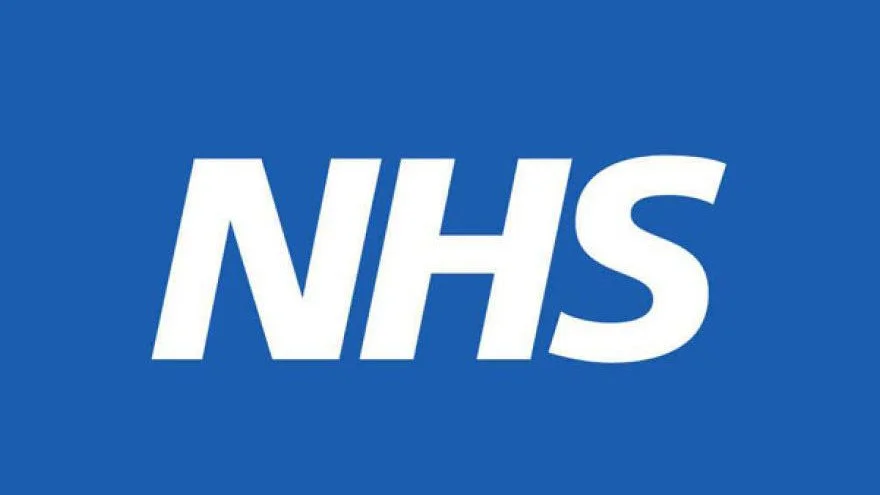NHS
Utilisation & Capacity Analysis
Diagnostic analysis using Python and presenting insights
The project was aimed at addressing the NHS’s concerns around the utilisation of services, missed appointments by considering appointment data and the potential value of using external data sources such as Twitter.
-
The report considered the two primary business questions as proposed by the NHS:
Has there been adequate staff and capacity in the networks?
What was the actual utilisation of resources?
-
Conducted exploratory, explanatory and diagnostic analysis on Python to identify anomalies and trends.
Utilised Python libraries such as Pandas and Numpy for data wrangling.
Developed descriptive visualisations on Python using Matplotlib and Seaborn.
-
I identified key areas for improvement, including optimising resource allocation.
Suggested to incentivize more telephone over face-to-face appointments
Suggested keeping time between booking and appointment short
Suggested to increase staff capacity earlier in the week
Suggested to monitor staff specific DNA rates
-
Excel
Python (Jupyter Notebook)
-
This project lasted 6 weeks and I received a final grade of Distinction
Key insights and recommendations




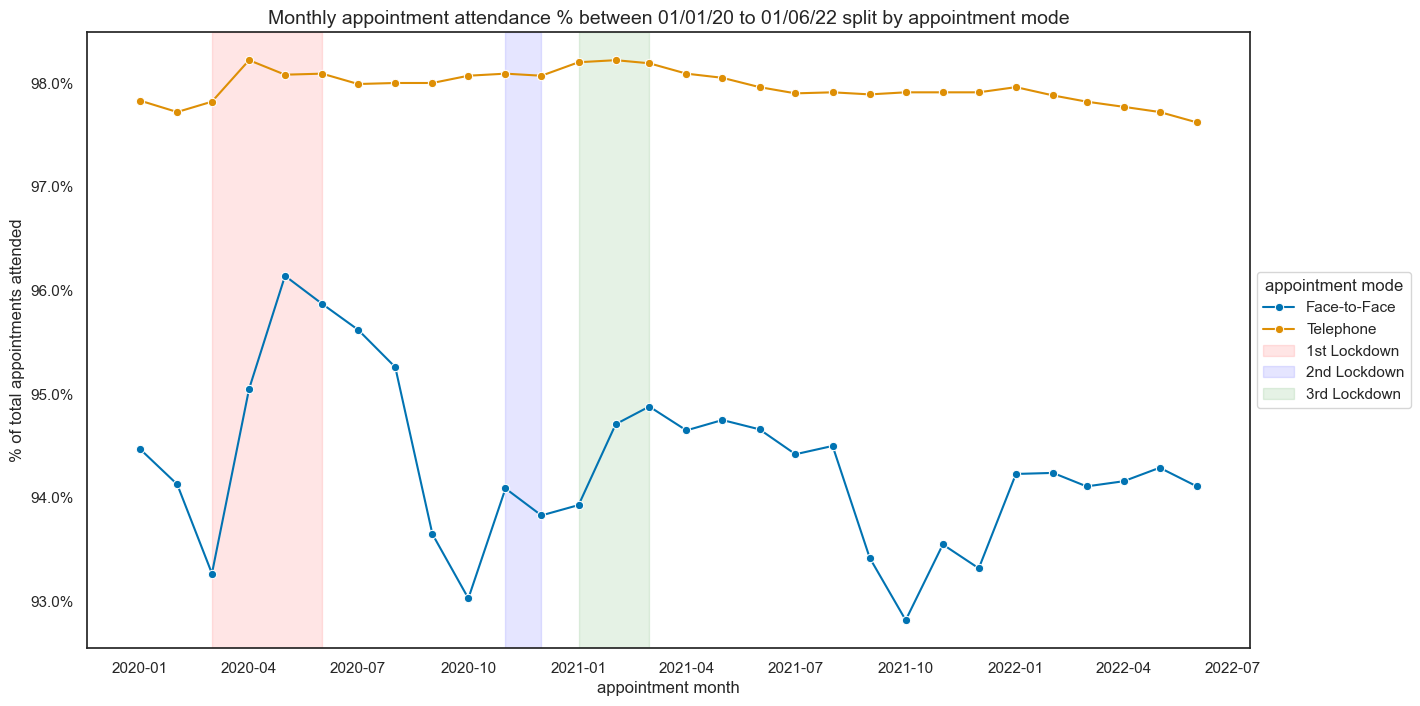
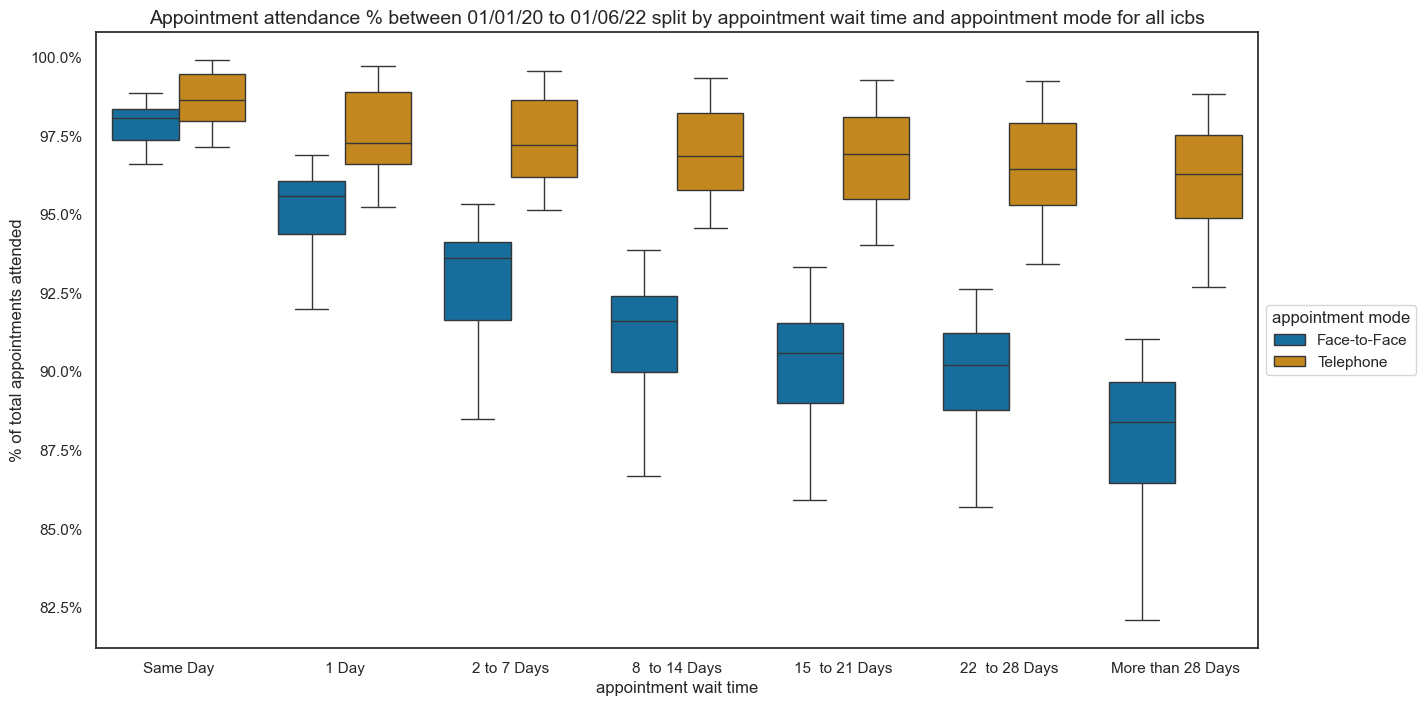
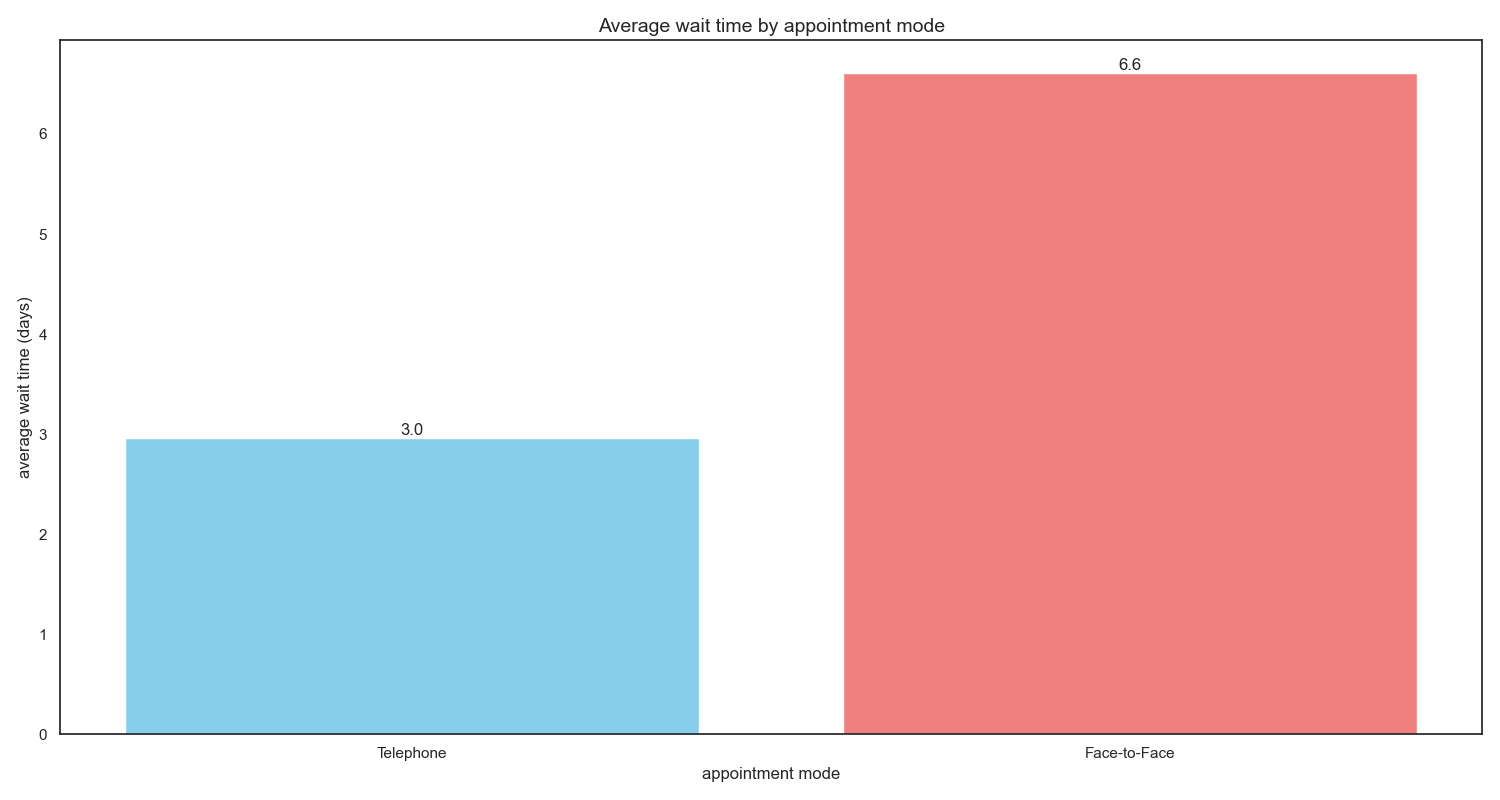
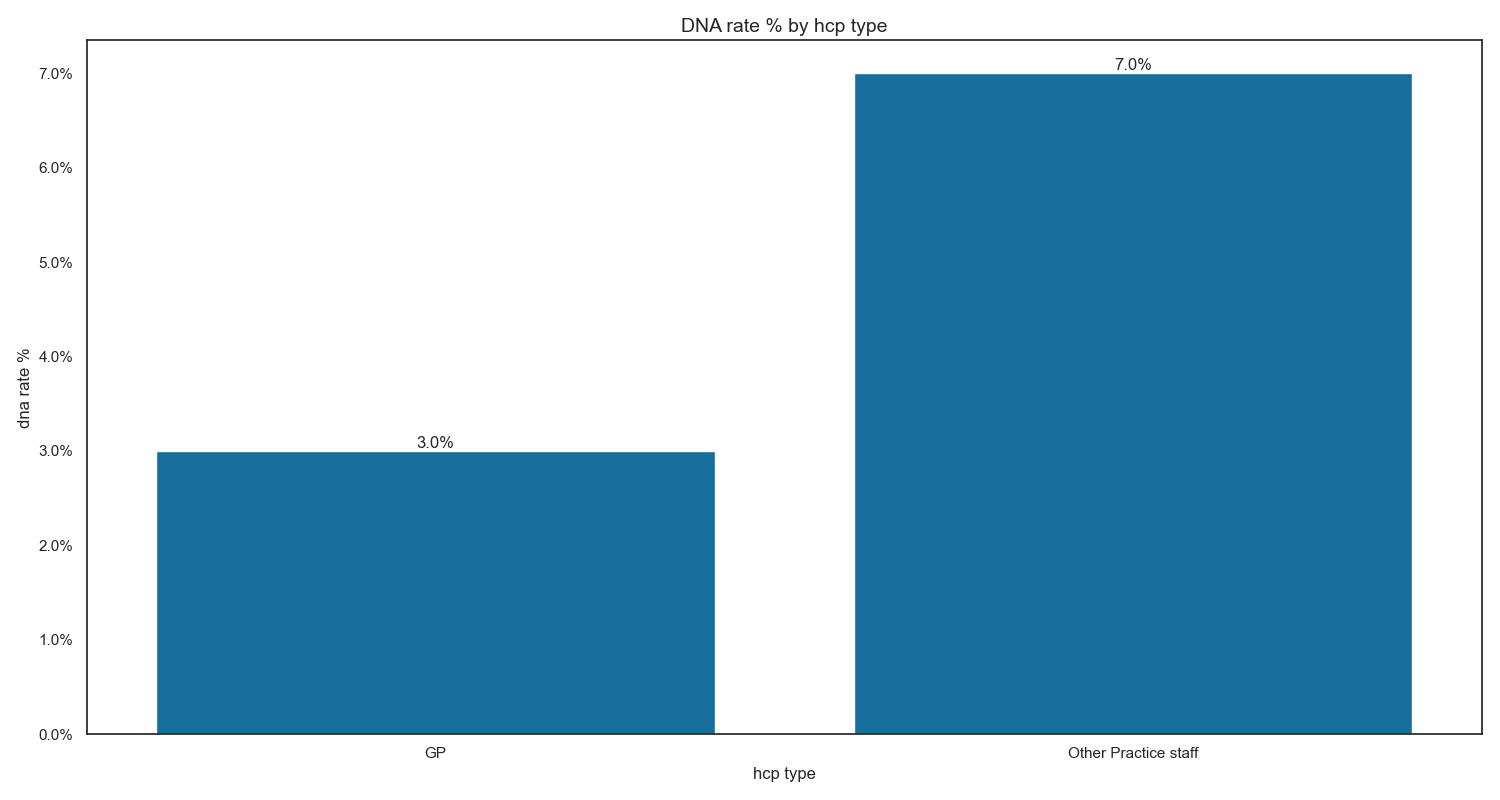

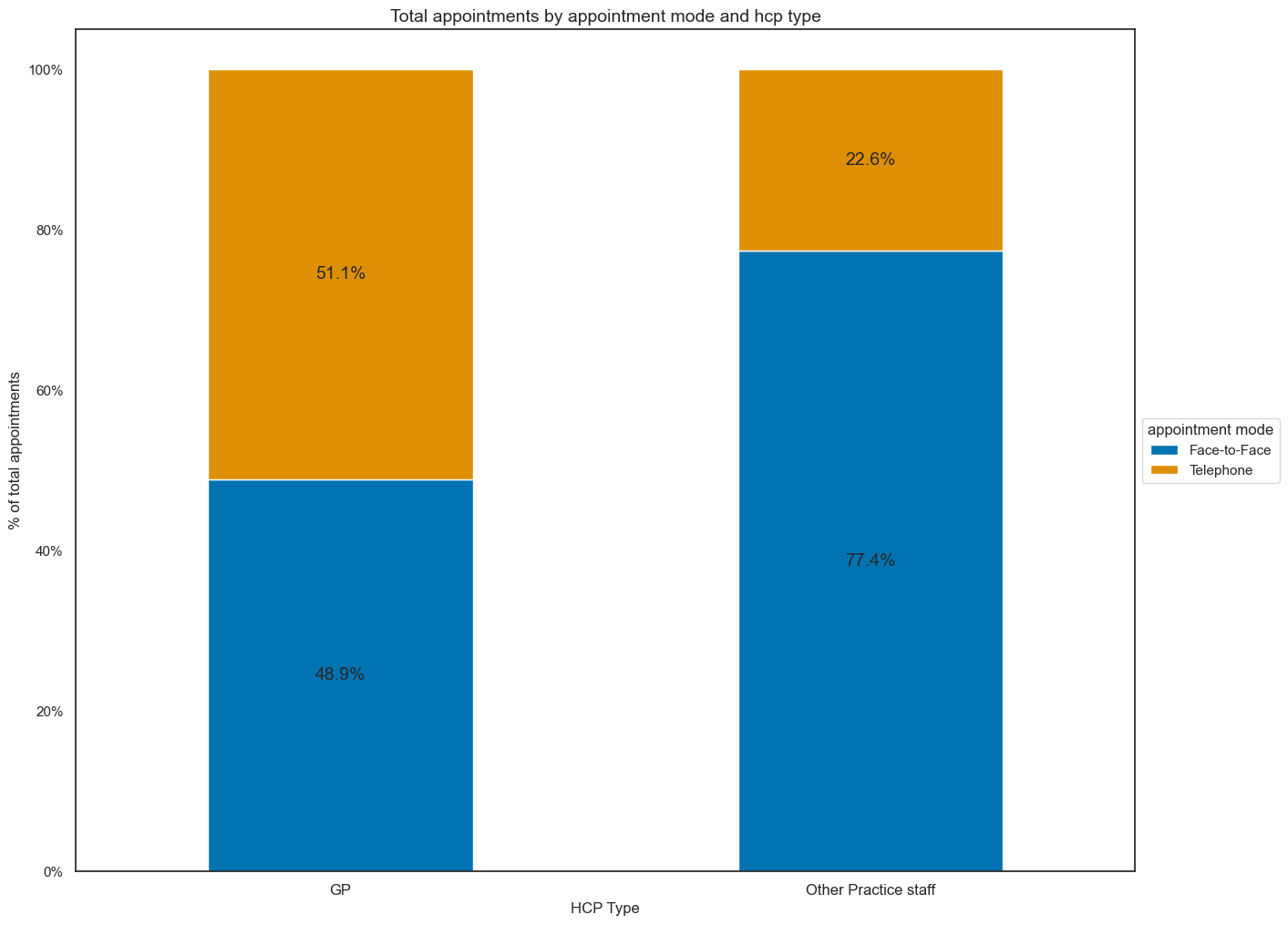
Insights and Recommendations
Key insights
Strong positive correlation between ‘average wait time (days)’ and ‘DNA (did not attend) rate %’. Pearson Correlation Coefficient = 0.89 & P- value = 0.0075. This result is statistically significant, meaning higher wait times are driving more missed appointments.
Attendance rates are higher for telephone appointments across all wait times, but as wait time increases, the gap between telephone attendance and face to face attendance increases. A reason for this trend could be due to the average wait time being more than double for face-to-face appointments compared to telephone appointments.
4.16% of total appointments are missed, which is costing the NHS £927M annually (assuming £30 per missed GP appointment). North West and London regions have the highest DNA rates.
Other Practice staff have more than double the DNA rate to that of GPs. A reason for this trend could be due to the average wait time for other practice staff being double to that of GPs.
The NHS, with a daily capacity limit of 1.2 million appointments, exceeded this capacity on 175 of the 334 days analysed (52%). Monday and Tuesday emerged as the most common days when capacity was exceeded.
GPs handle 51% telephone, 49% face-to-face appointments which shows more favourability towards telephone. Other practice staff handle 23% telephone, 77% face-to-face showing the favourability towards face-to-face for other practice staff.
Telephone appointments went from c15% in Jan20 to more common than face to face appointments in April20 at c50%. Since the first lockdown, face to face appointments have increased and telephone appointments have seen a decline.
Key recommendations
Incentivize more telephone over face-to-face appointments. Attendance is greater for telephone appointments. A limitation is that we don’t know what patients prefer telephone appointments, but if the data was enriched with patient data, the NHS could consider offering telephone appointments for patients more likely to miss face-to-face appointments.
Keep time between booking and appointment short. These appointments are more likely to be attended.
Increase staff capacity earlier in the week. Demand is highest on Mondays/Tuesdays.
Monitor staff specific DNA rates. Other Practice Staff have a higher DNA rate and average wait time compared to GPs, but they also conduct proportionally more face-to-face appointments. Consider expanding telephone appointments for Other Practice Staff to help reduce missed appointments.
Twitter insights. twitter data proved to be less useful, but potential insights can be unlocked through cleaned, ethical analysis using relevant hashtags.
